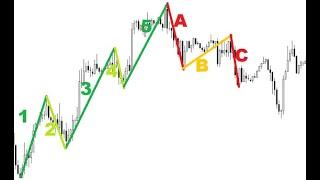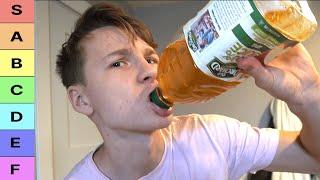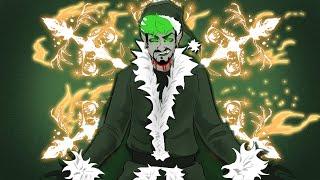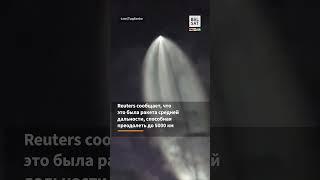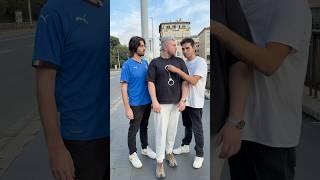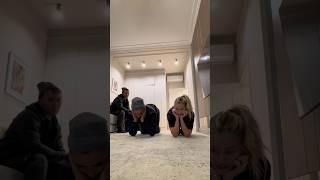
Identifying & Trading with Wave Patterns
There are two types of motive waves: the Impulse and the Diagonal.
The Impulse Wave is the kind we have been using so far to illustrate how the structure of Elliott Wave is put together. It is the most common motive wave and the easiest to spot in a market.
Like all motive waves, it consists of 5 sub-waves; three of them are also motive waves and two corrective waves. This is labeled as a 5-3-5-3-5 structure, which was shown above. However, it has three rules that define its formation. These rules are unbreakable. If one of these rules is violated, then the structure is not an impulse wave and one would need to re-label the suspected impulse wave.
The three rules are:
Wave 2 cannot retrace more than 100% of Wave 1.
Wave 3 can never be the shortest of waves 1, 3, and 5.
Wave 4 can never overlap Wave 1.
A Diagonal Wave is the second type of motive wave. It is not an impulse wave. However, like all motive waves, its goal is to move the market in the direction of the trend. Also, like all motive waves, it consists of five sub-waves. The difference is that the diagonal looks like a wedge - either expanding or contracting. Also, the sub-waves of the diagonal may not have a count of five, depending on what type of diagonal is being observed.
Please visit, subscribe, comment and like my videos at@InvestorsTradingAcademy
The Impulse Wave is the kind we have been using so far to illustrate how the structure of Elliott Wave is put together. It is the most common motive wave and the easiest to spot in a market.
Like all motive waves, it consists of 5 sub-waves; three of them are also motive waves and two corrective waves. This is labeled as a 5-3-5-3-5 structure, which was shown above. However, it has three rules that define its formation. These rules are unbreakable. If one of these rules is violated, then the structure is not an impulse wave and one would need to re-label the suspected impulse wave.
The three rules are:
Wave 2 cannot retrace more than 100% of Wave 1.
Wave 3 can never be the shortest of waves 1, 3, and 5.
Wave 4 can never overlap Wave 1.
A Diagonal Wave is the second type of motive wave. It is not an impulse wave. However, like all motive waves, its goal is to move the market in the direction of the trend. Also, like all motive waves, it consists of five sub-waves. The difference is that the diagonal looks like a wedge - either expanding or contracting. Also, the sub-waves of the diagonal may not have a count of five, depending on what type of diagonal is being observed.
Please visit, subscribe, comment and like my videos at@InvestorsTradingAcademy
Тэги:
#barry_norman #financial_education #cfd_trading #forex_trading #how_to_trade_cryptocurrency #bitcoin_trading #technical_analysis #forex_strategy #traders_education #contract_for_difference #precious_metal #margin_trading #arbitrage_trading #ethereum_trading #altcoin_investing #forex_analysisКомментарии:
Identifying & Trading with Wave Patterns
Investors Trading Academy
MERCARI is going to go OUT OF BUSINESS! FINISHED
RockstarFlipper
Juice Tier List
MuffinJuice
Greek Island Hopping from Santorini - Naxos, Paros, Ios on a Budget 2023
Parks Travel Guide
"Hard Dark Trap Beat | "Shadow Hustle" Instrumental @illcreates"
Illusive Creations
5 Tips On How To Get Hired Fast
Tut2Learn - GK, Exam Tips, Job Tips, Biography
"Православна музика за малки и големи", издание на Ловчанска Света Митрополия
Ловчанска Света Митрополия
Hilarious Raccoon Wrestles With Adorable Golden Retriever! #Shorts
The Pet Collective
This Christmas (I'll burn it to the ground) - Antisepticeye Animatic REMAKE
LIV me Entertain U
Best Blocks in NBA History
The Highlight Factory
